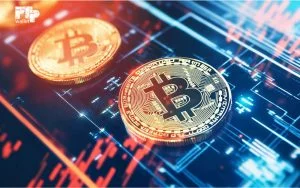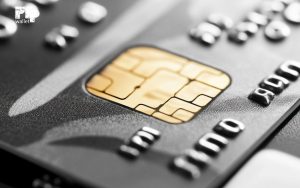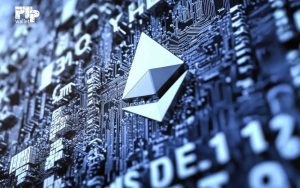Flare is a Layer 1-like Ethereum with added data acquisition functionality. It offers developers decentralized access to high-integrity data from other chains and the internet which enables the creation of dapps with new use cases and monetization models. It also allows these dapps to serve multiple chains through a single deployment.
Songbird
Songbird is the canary network for Flare. It is an operational blockchain with a defined token supply that allows new features or applications to be tested under production conditions before they are deployed on the main network. This is in contrast to a test net which generally has an unlimited token supply.
The Flare Time Series Oracle
The FTSO is a highly-decentralized protocol for safely retrieving external time series data for use on Flare, such as digital asset price pairs. It takes data at predetermined intervals (currently 3 minutes) from an independent network of data providers, which are incentivized to deliver accurate data.
The FTSO system computes an estimate for each time series and makes it available for any user or application to request. This data can be used for any number of use cases, such as asset prices in a decentralized lending protocol. The Flare Time Series Oracle (FTSO) delivers highly-decentralized time series data feeds to dapps on Flare. Currently, the FTSO provides digital asset price pairs and updates every 3 mins.
Approximately 100 independent data providers are incentivized by the network to deliver this information accurately. The rewards that each data provider receives for the successful provision of decentralized data are then shared with all token holders that have delegated to them.
The State Connector
The State Connector enables off-chain event data to be brought on-chain and used by dapps. This is data that can not change, such as whether a transaction has happened on a different blockchain or a sporting result held in a Web2 database.
It does this in a decentralized manner with independent attestation providers needing to come to a consensus on the data before it is made available on the network. To our knowledge, no other oracle currently does this.
The State Connector enables Flare to safely and trustlessly come to a consensus over an event that has taken place externally to the network, for example, a blockchain transaction between two parties or the content of an API on the internet.
An example use of the State Connector is to verify whether a transaction has taken place on another blockchain, such as whether 1 Bitcoin has been transferred from address A to address B.
Together, these protocols give developers decentralized access to high-integrity data from other chains and the internet. Both the State Connector and FTSO are used in the recent demonstration of purchasing an NFT on Flare using the token of a different blockchain.
FLR is the native token used for payments and transaction fees.FLR can also be wrapped into an ERC-20 variant, WFLR. WFLR tokens have additional functionality and can be delegated to FTSO data providers or used to participate in network governance. These two uses are not mutually exclusive and do not prevent the tokens from being used in other EMV-compatible dapps and smart contracts on Flare.
Who are the founders of Flare (FLR)?
The Co-Founder & CEO is Hugo Philion. The Co-Founder & CTO is Sean Rowan.
What is Flare (FLR) used for?
Delegating
Delegation is the temporary assignment of your FLR or SGB tokens to Flare Time Series Oracle data providers to support the delivery of decentralized data to the network. The tokens can be undelegated at any time, and they are not locked from being used for other purposes.
Collateral
It can be used as collateral within third-party decentralized applications built on Flare blockchains (cross-chain or solely native).
Fees
The tokens serve as transaction fees to prevent spam attacks.
Rewards
Token holders receive a share of the rewards earned by the data providers they have delegated to. The more accurate a data provider’s submissions and the larger the number of tokens delegated to them, the more rewards they receive and can share with their delegators.
Vote
Tokens can be used to participate in governance by voting on Flare Improvement Proposals.
Wrap tokens
Tokens can be wrapped natively in Bifrost Wallet, or by connecting to the Flare Portal when using a different hardware or software wallet.
Autoclaiming
Both the FlareDrops and FTSO Delegation Rewards can be automatically claimed and wrapped to maximize compounding. This feature will also be available on Songbird soon.
How is Flare (FLR) unique?
Flare is Ethereum Virtual Machine (EVM) based, allowing any applications written in Solidity to run on Flare and any other EVM chain. Flare believes that blockchain-based dapps have to be more relevant and useful to the broader population. However, one of the key constraints is the limited variety of decentralized data available on-chain, which makes it difficult to build dapps that can have a genuine role in people’s lives.
Hence, the majority of current DeFi use cases are focused on financial speculation rather than anything connected to the real world. Flare’s mission is to make blockchain more useful by providing dapp builders with secure access to a greater variety of decentralized data. This will enable the creation of new types of dapps that are more relevant to more people, driving wider adoption and usage of blockchain technology.
Flare has two data acquisition protocols which are secured by the Layer 1 network.
They are native to Flare, so developers don’t need to rely on other third-party data oracle solutions, which can be centralized and expensive.
Flare’s rewards create a positive feedback loop incentivizing the provision of accurate data, whereby the most successful data providers will attract the most delegations. Flare FTSO Delegation Rewards can be claimed every 3.5 days, while Songbird rewards are claimable once a week.
Governance on Flare originates from two primary sources. First, the Flare Foundation can submit governance proposals for the Flare mainnet and Songbird canary network, which FLR and SGB token holders can vote upon. Second, future developments will implement a bicameral system where SGB token holders can submit and vote upon governance proposals for the Songbird network with the intention of them being advanced as Flare Improvement Proposals if they are successful.
How many Flare (FLR) coins are in circulation?
Flare is the transactional token for Flare Network. It has a total supply of 100 Billion FLR coins.
- 28.5 Billion FLR distributed directly to community members over 36 months.
- 20 Billion FLR available for community members who bring value to the Flare network by using cross-chain bridges (FAssets & Layer Cake).
- 9.8 Billion FLR allocated to the Flare Foundation for community & ecosystem initiatives.
- Team, advisors & backers:
- 5.7 Billion FLR to be provided to early-stage backers, vesting from month 6.
- 13.5 Billion FLR allocated to existing and future team members, plus advisors.
- 12.5 Billion FLR allocated to Flare Networks Limited, which is responsible for native product development on Flare.
- 10 Billion FLR allocated to the Flare VC Fund, which will invest in promising ecosystem projects.
How is the Flare network secured?
Flare partnered with a blockchain security specialist, FYEO. The firm performs ongoing security audits of Flare’s codebases, supporting safer smart contract development and helping minimize risk for all users of the network.
How do I buy Flare (FLR)?
The FLR token can be used for a wide range of purposes, like staking and governance.
FLR tokens can be easily purchased by following the following steps.
Open an account with the crypto trading platform.
* Transfer the specific amount of your fiat currency to your account.
* Wait for your deposit to be confirmed and buy FLR through your trading account by swapping with BTC, ETH, or USDT pairs.
Which Cryptocurrency Wallet Supports Flare (FLR)?
The PTPWallet platform supports many cryptocurrencies, with FLR soon to be included. Because of its vast use case, PTPWallet has grown to become one of the most used platforms, as it serves as an exchange and an engine to discover other cryptocurrencies. The platform offers a simple user interface, is supported by both Android and iOS devices, and comes with its own mobile wallet app.
If you’re looking to learn more about PTPWallet and to stay updated on our latest news, be sure to follow us on our social media accounts. You can find us on our channels.
Telegram: https://t.me/ptpwalletnews
Twitter: https://twitter.com/PtpWallet



